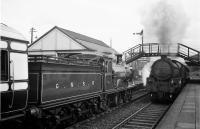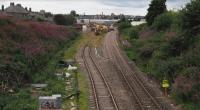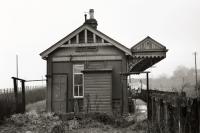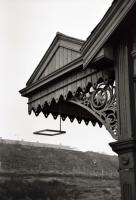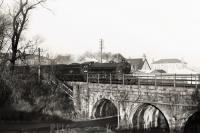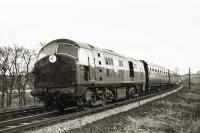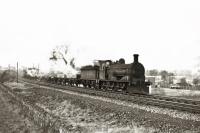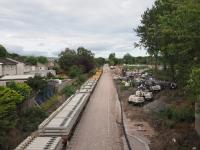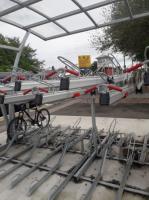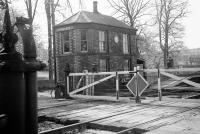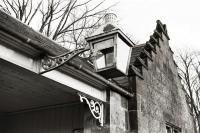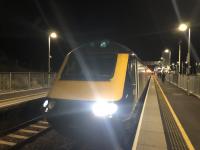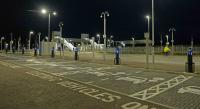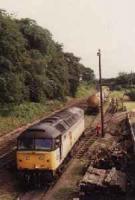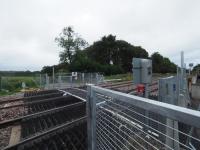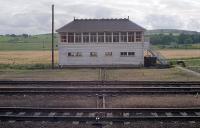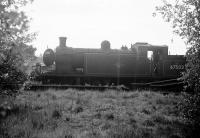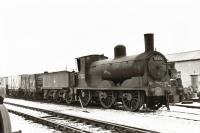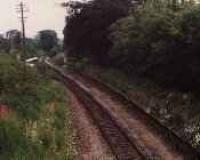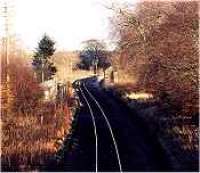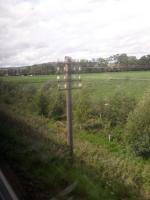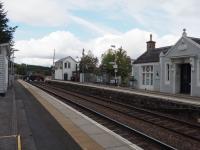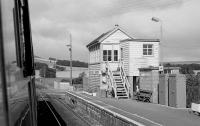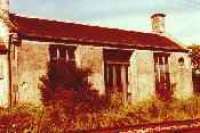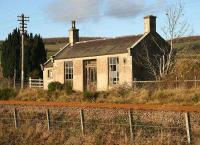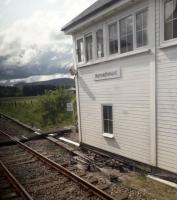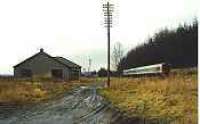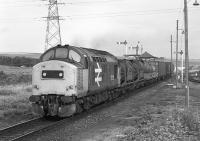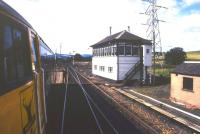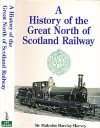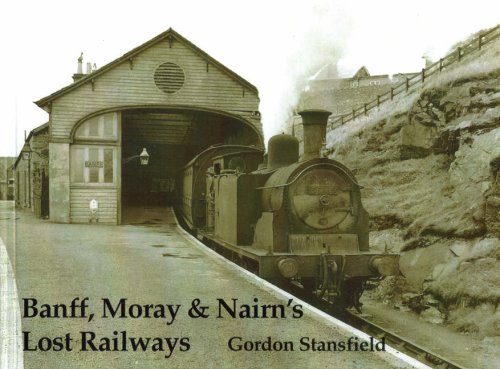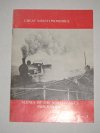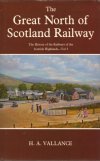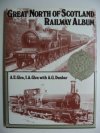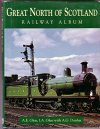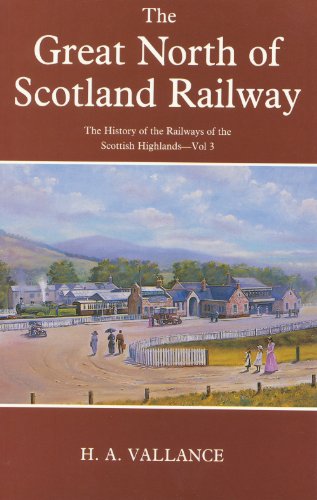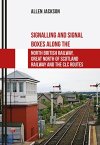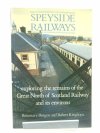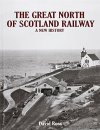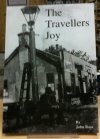Great North of Scotland Railway
Introduction
This former railway was located largely in Aberdeenshire, the north east of Scotland, north of Aberdeen with many branch lines extending over the region. Portions of this railway provide a passenger and goods service between Aberdeen and Keith (53 miles). (The line extends beyond Keith to Inverness by the former Highland Railway.) A branch to Dufftown exists, used by the Keith and Dufftown Railway Association. The goods yard at Elgin East was originally a Great North of Scotland Railway terminus. From the original core line from Aberdeen to Keith the company expanded greatly. The company owned and purchased a number of other local lines. Reaching locations such as Aboyne, Ballater, Old Meldrum, Fraserburgh, Peterhead, Portsoy, Buckie [GNSR], Banff, Elgin [GNSR] and Boat of Garten. All these lines are now closed. Some remain as long distance footpaths. The company is often referred to as the GNoSR or GNSR. The Great North of Scotland Railway Association was created to bring together everyone interested in the former company and its lines. With the increased traffic due to the large number of branches the main line, between Aberdeen and Keith, was doubled. Their closure in the 1960s, and a reduction in traffic, led to the line being reduced to a single line in the 1970s, long the source of bottlenecks ever since. The City of Aberdeen has expanded greatly since the 1960s (and continues to grow) and the line was redoubled from Kittybrewster [2nd] (north of the city centre) through to Inverurie in 2019. In addition, a new Kintore station is due to open in 2020.
Dates
Locations along the line
These locations are along the line.
This was the short lived Aberdeen terminus of the Great North of Scotland Railway. Kittybrewster was to the north of the city and was never intended to be the terminus. It closed with the opening of the Aberdeen Waterloo Extension (Great North of Scotland Railway). The location was close to today's road bridge. Nothing remains of this station. To the west of the station was a goods shed ...
More detailsSee also
Denburn Valley Line (Great North of Scotland Railway)
This two platform through station was opened with the Denburn Valley Line (Great North of Scotland Railway). It replaced Kittybrewster [1st], which was to its immediate east and located on the Aberdeen Waterloo branch. The line was opened as a double track between Denburn Junction and Kittybrewster Junction in 1867.
...
See also
Denburn Valley Line (Great North of Scotland Railway)
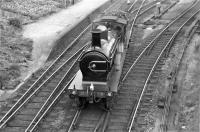
Robin McGregor 28/07/1964

Duncan Ross /08/2018
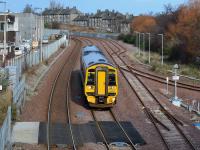
Bill Roberton 11/02/2020
This depot was both a roundhouse and shed. Approach was from the north and the shed was located on the west side of the line.
...
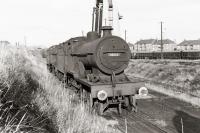
David Murray-Smith //1962
This yard was located to the east of Kittybrewster [2nd] station. It was served from the north. A loop came off the main line to the south of the station and rejoined at Kittybrewster Junction north of the station. This crossed the Aberdeen Waterloo line to the south of the station.
...
See also
Denburn Valley Line (Great North of Scotland Railway)

G H Robin collection by courtesy of the Mitchell Library, Glasgow 07/07/1951
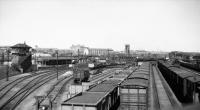
David Murray-Smith //1957
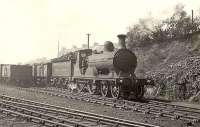
G H Robin collection by courtesy of the Mitchell Library, Glasgow 17/07/1950
This junction was located north of Aberdeen Kittybrewster, Kittybrewster [1st] and Kittybrewster [2nd] station. It was initially formed, in 1856, as a junction between the original main line of the Great North of Scotland Railway and the Aberdeen Waterloo Extension (Great North of Scotland Railway), 19 chains north of the original terminus Aberdeen Kittybrewster, which ...
More detailsSee also
Aberdeen Waterloo Extension (Great North of Scotland Railway)
Denburn Valley Line (Great North of Scotland Railway)
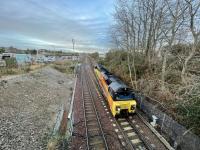
Duncan Ross 27/11/2020
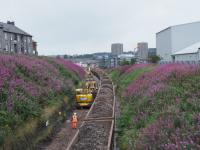
...
Duncan Ross 11/08/2019
This was a two platform suburban station in Aberdeen. The station was between Kittybrewster [2nd] and Woodside [GNSR]. The eastbound/southbound platform had a small building, later joined by a small building on the facing platform. There were no goods facilities.
...

David Murray-Smith 05/04/1958
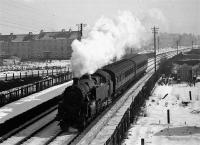
David Murray-Smith 20/02/1960
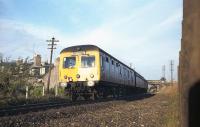
John McIntyre /09/1973
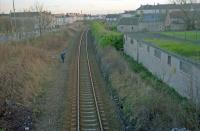
Ewan Crawford //1998
This was a suburban station in Aberdeen. It was a two platform station. There were no goods facilities.
...
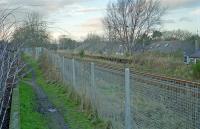
Ewan Crawford //1998
This was a two platform suburban station in Aberdeen. The main station building was on the eastbound platform. There were no goods facilities.
...
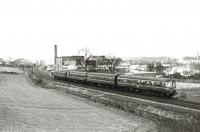
David Murray-Smith //1961

G H Robin collection by courtesy of the Mitchell Library, Glasgow 11/07/1950
This five arch two track viaduct crosses the Bucks Burn, and a road, immediately west of Bucksburn station.
...
This was a two platform station. The main station building was on the northbound platform with a smaller one on the southbound. Both had substantial glazed canopies.
...
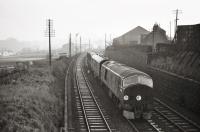
See query 2113 ...
David Murray-Smith //1961
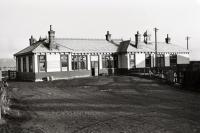
David Murray-Smith //1961
This was a two platform suburban station in Aberdeen. There were buildings on each platform. There were no goods facilities.
...
This was a two platform station with no goods facilities. The platforms were north of Market Street with the waiting rooms close to the road bridge crossing the line. A stone built recess into the embankment on the west side, for the northbound waiting room, remains.
...
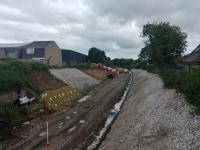
Alan Cormack 21/06/2018
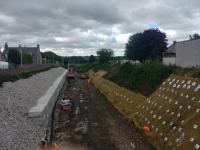
Alan Cormack 21/06/2018
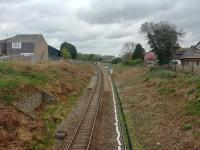
Alan Cormack 09/05/2018
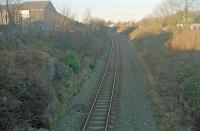
Ewan Crawford //1998
This is a two platform station with a car park in the village of Dyce on the east side of Aberdeen Airport.
...
See also
Formartine and Buchan Railway
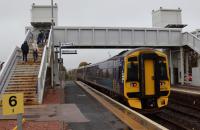
Mark Bartlett 25/10/2023
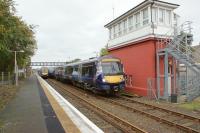
John McIntyre 19/10/2012
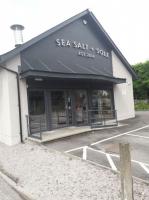
John Yellowlees 02/06/2019
This works provided creosote coated sleepers for the Great North of Scotland Railway. The works was within the 'V' of the junction north of Dyce station. The former Dyce Buchan signal box was retained after its closure in 1928 as an office for the works foreman.
...
This station was 400 yds north of the later Dyce station, opened with the opening of the Formartine and Buchan Railway. The station closed in 1861.
...
These sidings were opened in 2007 around the time of the closure of the goods yard at Aberdeen Guild Street. In addition to the provision of the sidings the loop at Dyce was extended and coloured lights replaced semaphore.
...

Duncan Ross 30/06/2019
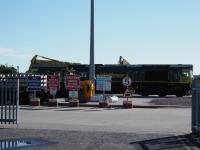
Duncan Ross 30/06/2019
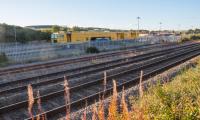
Ewan Crawford 06/10/2018
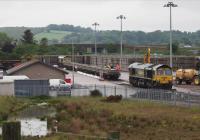
Duncan Ross 02/06/2019
This small station had a level crossing to the east. The platforms were in timber with small timber shelters.
...
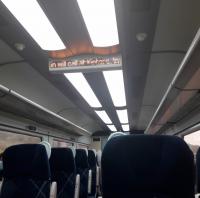
John Yellowlees 15/10/2020
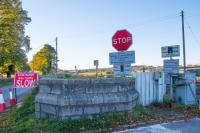
Ewan Crawford 06/10/2018
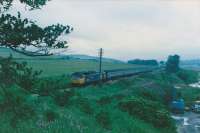
Charlie Niven /07/1988
This was a two platform station. The main station building, with crow-stepped gables, was on the Aberdeen bound platform. This was the original platform when the line was single track.
...
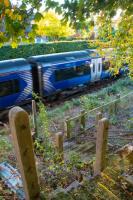
Ewan Crawford 06/10/2018
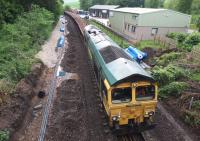
Duncan Ross 02/06/2019

Duncan Ross 02/06/2019
This level crossing was controlled by a signal box, a gate box. The crossing is south of Kintore [1st] station.
...

Duncan Ross 02/06/2019
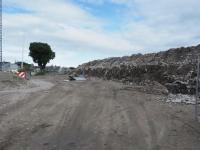
Duncan Ross 21/07/2019
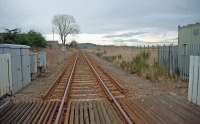
Ewan Crawford 03/02/1997
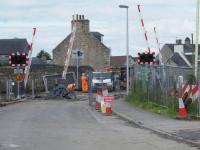
...
Duncan Ross 21/07/2019
This was a three platform station. There were two platforms on the main line and a bay platform at the north end, on the west side, for the Alford branch. There was a goods yard also at the north end on the west side, approached from the north. There was a turntable for the branch locomotive.
...
See also
Alford Valley Railway
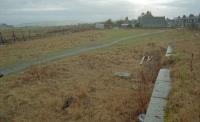
Ewan Crawford 03/02/1997
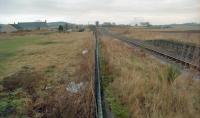
Ewan Crawford 03/02/1997
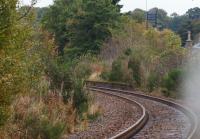
John McIntyre 19/10/2012
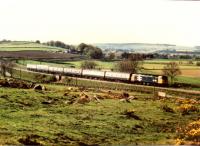
Ken Strachan /05/1987
This two platform station opened to the north west of Kintore. In addition the railway, which had been reduced to a single track, was re-doubled in 2019 (see below).
...
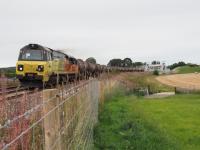
Duncan Ross 14/09/2020
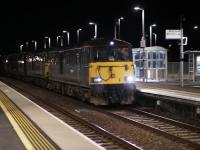
Duncan Ross 14/11/2020
...
More detailsThis location is south of Inverurie. The Port Elphinstone Mills (1858-2009) were served with sidings after their opening.
...
This location is south of Inverurie. There was a halt of some description in 1854 - perhaps railway staff only. It did not remain in use as a station.
...
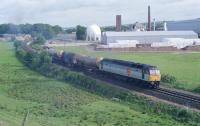
Ewan Crawford //1990
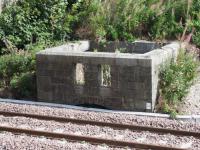
Duncan Ross 22/08/2019
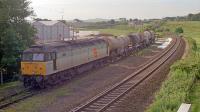
Ewan Crawford //1990
This short branch from Port Elphinstone terminated by a corn mill and the Inverurie Brewery. The branch served the area formerly served by the terminal basin of the Aberdeenshire Canal which closed to allow construction of the Great North of Scotland Railway.
...
This viaduct is just north of Port Elphinstone. It carried the railway over the River Don and the course of the former Aberdeenshire Canal (just to the south of the river).
...
The original station at Inverurie was south of the current station. It had an island platform for the Aberdeen bound trains and Inverury and Old Meldrum Junction Railway branch. The branch platform terminated with a turntable and was also a loop back onto the main line. The main station building was on the northbound platform with another on the island platform, which was accessed by ...
More detailsSee also
Inverury and Old Meldrum Junction Railway

Duncan Ross 02/09/2020
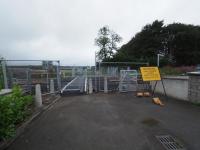
...
Duncan Ross 11/08/2019
This is a two platform station with a large granite built single storey station building on the westbound platform. The station has a large car park. The station building has something of the appearance of distilleries to its design, with a ventilator (or is it a cupola?)! Internally the building has fine dark stained wood panelling. One room was the private waiting room of the Earl of Kintore ...
More detailsSee also
Inverury and Old Meldrum Junction Railway
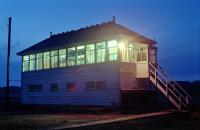
Ewan Crawford //1990

Ewan Crawford 06/10/2018
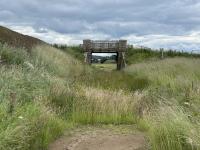
Duncan Ross 14/07/2023
This was the railway works of the Great North of Scotland Railway after relocation from Kittybrewster Works. The site is no longer in railway use and is being redeveloped for a number of uses. The works extended to 24 acres.
...
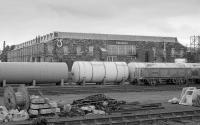
...
Bill Roberton //1986
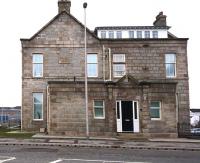
Andy Furnevel 28/03/2018
This was the junction station for the Banff, Macduff and Turriff Junction Railway. It opened with the branch. Although it also served the local area, with a low population and largely farmland, its chief purpose was as an interchange station. The station opened with the opening of the branch and closed with its closing to passengers.
...
See also
Banff, Macduff and Turriff Junction Railway
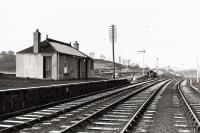
David Murray-Smith //1961
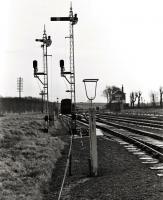
David Murray-Smith //1961
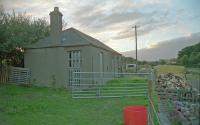
Ewan Crawford //1999
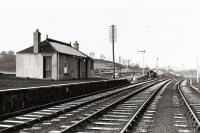
David Murray-Smith //1961
This was a two platform station. The station building on the eastbound platform survives long after closure of the station. The signal box, at the east end of the westbound platform, survived long after its closure, demolished in the 2000s. The line has been slewed to midway between the platforms.
...
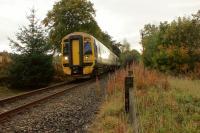
John McIntyre 16/10/2012
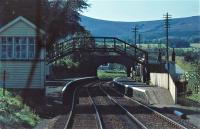
Brian Haslehust 31/08/1964
This was a two platform station. There was a goods yard on the south side reached by a reversing spur, itself reached by reversing east from the westbound line through the station.
...
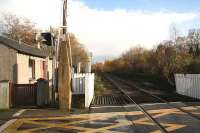
John Furnevel 08/11/2006
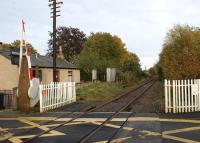
John McIntyre 16/10/2012
This station was at Mill of Buchanstone, just north west of the Rettie cottages. There was a siding to the south of the line, served from the east, and a small building on the north side of the line.
...
This is a two platform station with a fine single storey stone building on the eastbound platform, dating from 1880. A modern has been added over the street entrance. There is a good example of a Great North of Scotland Railway waiting shelter on the westbound platform. The station is at Rothney, to the south of Insch. There is a fine footbridge between the platforms.
...
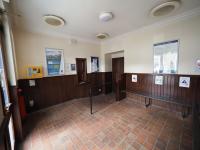
Duncan Ross 23/09/2020
This was a two platform station. A stone station building still stands on the former eastbound platform. There was a small timber building on the westbound platform. There was a level crossing at the east end of the station. There were no goods facilities.
...
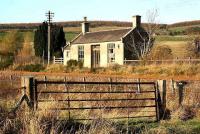
John Furnevel 08/11/2006
This is a listed 'C' road bridge carrying the southern approach to Wardhouse [House] which crosses the Great North of Scotland Railway west of Wardhouse station. The bridge is quite plain.
...
This summit, near Laighmuir, is the highest point on the former Great North of Scotland Railway at 594 ft.
...
This was a two platform station. The westbound platform and building remain intact. The station is at the west end of a long loop from Insch station.
...
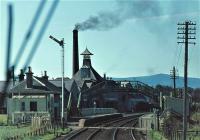
Brian Haslehust 31/08/1964
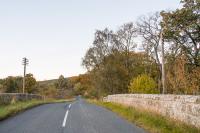
Ewan Crawford 06/10/2018
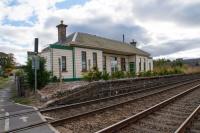
Ewan Crawford 06/10/2018
The east drive to Leith Hall crosses the Great North of Scotland Railway by this B listed road bridge.
...
This unusual double arch stone built bridge crosses over the Great North of Scotland Railway (east arch) and Water of Bogie (west arch).
...
This was a two platform station. The main station building, two storeys, still stands on the former westbound (down) platform. The building is now in use as a house. The remaining track is by this platform, slightly slewed. An alternative spelling is 'Gartley'.
...
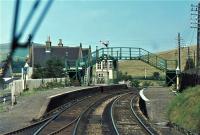
Brian Haslehust 31/08/1964
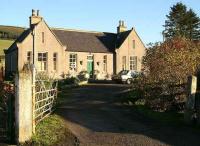
John Furnevel 08/11/2006
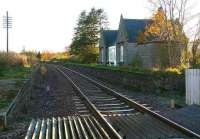
John Furnevel 08/11/2006
This is a two platform station. There is a modern station building on the westbound platform. On the east side of the line is an extensive goods yard, served from the south. Latterly the yard dealt with timber traffic but in the past it saw potato traffic.
...

Duncan Ross 26/10/2020
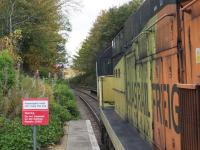
Duncan Ross 26/10/2020
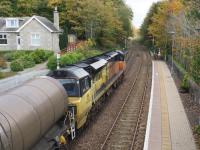
...
Duncan Ross 26/10/2020
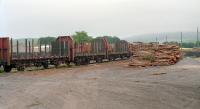
Ewan Crawford //1989
This temporary signal box controlled the east end of Deveron Viaduct. When the line was doubled, the single track viaduct required replacement. In the interim this box controlled the east end of the short single track section over the old bridge. During the work a permanent way siding may have been located here.
...
This is a formerly double track viaduct over the River Deveron east of the former Rothiemay station. The viaduct carries one track today.
...

Ewan Crawford 19/11/2017
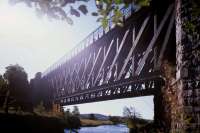
David Spaven 14/09/2013
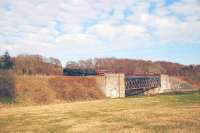
John Gray 11/04/2010
This was a two platform station on a double track line. There was a goods yard on the north side, approached by reversal from the east.
...

Bill Jamieson 05/09/1970
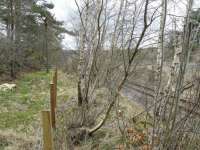
John Williamson 17/04/2010
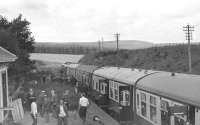
Bill Jamieson 05/09/1970
This was an exchange station. The main line remains open here but is now a single track with little hint of the former station. A platelayers hut remains, this was south of the station on the west side of the line. The track is the former westbound line, the eastbound being lifted. The kink of the line round the station has been straightened.
...
See also
Moray Coast Railway (Great North of Scotland Railway)
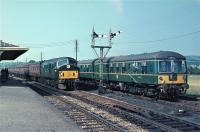
Brian Haslehust 10/08/1965
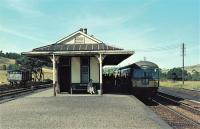
Brian Haslehust 31/08/1964
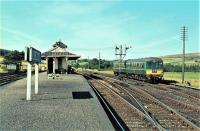
Brian Haslehust 31/08/1964

Brian Haslehust 31/08/1964
This was a two platform station for much of its existence. From 1859 to 1886 it was the junction station for the Banff, Portsoy and Strathisla Railway with the junction at the east end of the station. Because of this it had a turntable at the east end, north of the line. There was a bay at the east end of the eastbound platform. The station had a loop before the main line was doubled. The main ...
More detailsSee also
Banff, Portsoy and Strathisla Railway
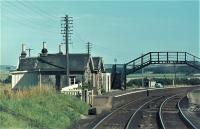
Brian Haslehust 31/08/1964
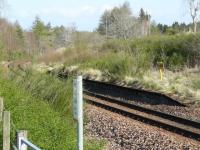
...
John Williamson 19/04/2009
This signal box was east of Keith Junction. It opened with the doubling of the line from Rothiemay in 1898.
...
This refers to the actual junction. For the station see Keith. This junction was formed in 1858 between the Great North of Scotland Railway and the Inverness and Aberdeen Junction Railway further added to with the opening of the Keith and Dufftown Railway in 1862.
...
See also
Keith and Dufftown Railway
Inverness and Aberdeen Junction Railway
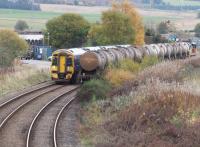
Duncan Ross 28/10/2020
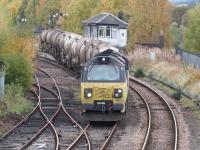
Duncan Ross 28/10/2020
Keith Shed opened with the extension of the Great North of Scotland Railway to Keith.
...
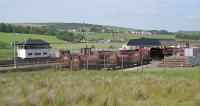
Ewan Crawford //1990
This is a one platform station, with a second out of use platform on the former route to Dufftown. There is a passing loop to the east of the station, inconvenient when trains are running late.
...
See also
Inverness and Aberdeen Junction Railway
Buckie and Portessie Branch (Highland Railway)
Keith and Dufftown Railway
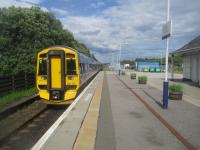
David Bosher 16/06/2019
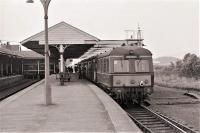
Brian Haslehust 12/08/1965
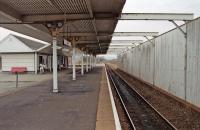
Ewan Crawford 01/02/1997
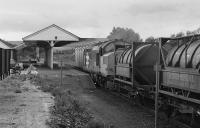
Bill Roberton //1990
Books










